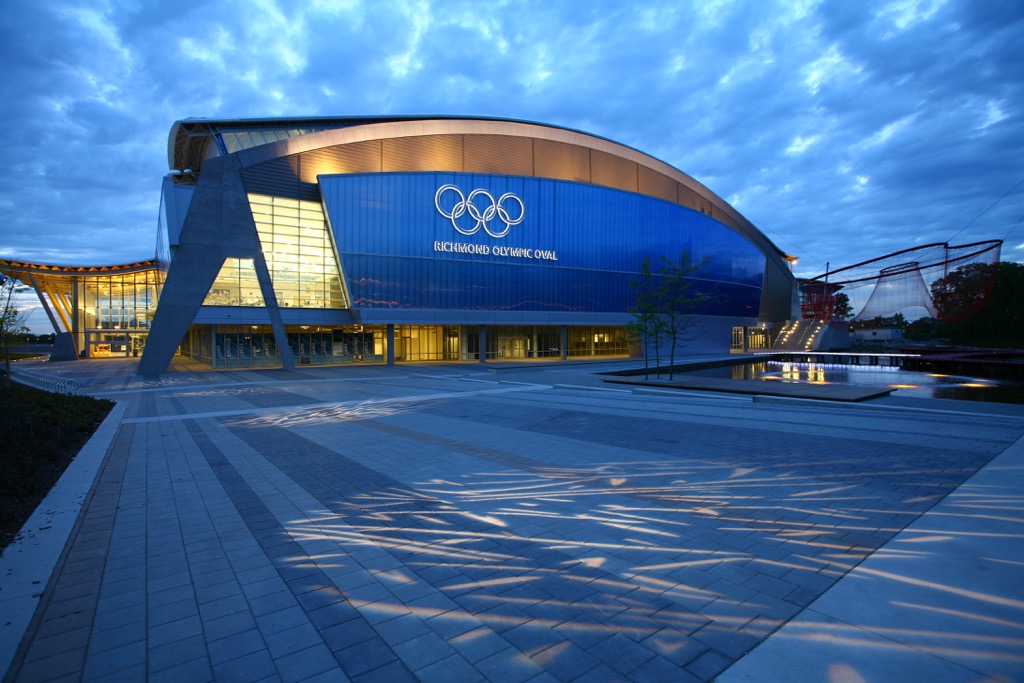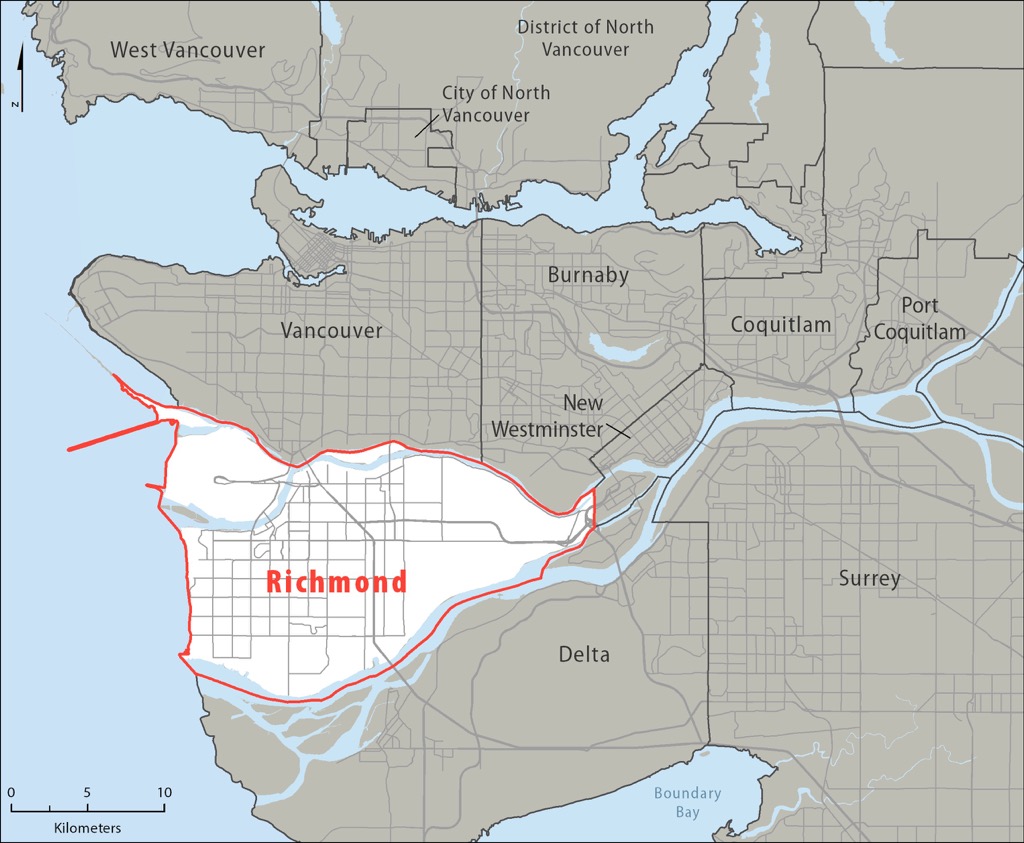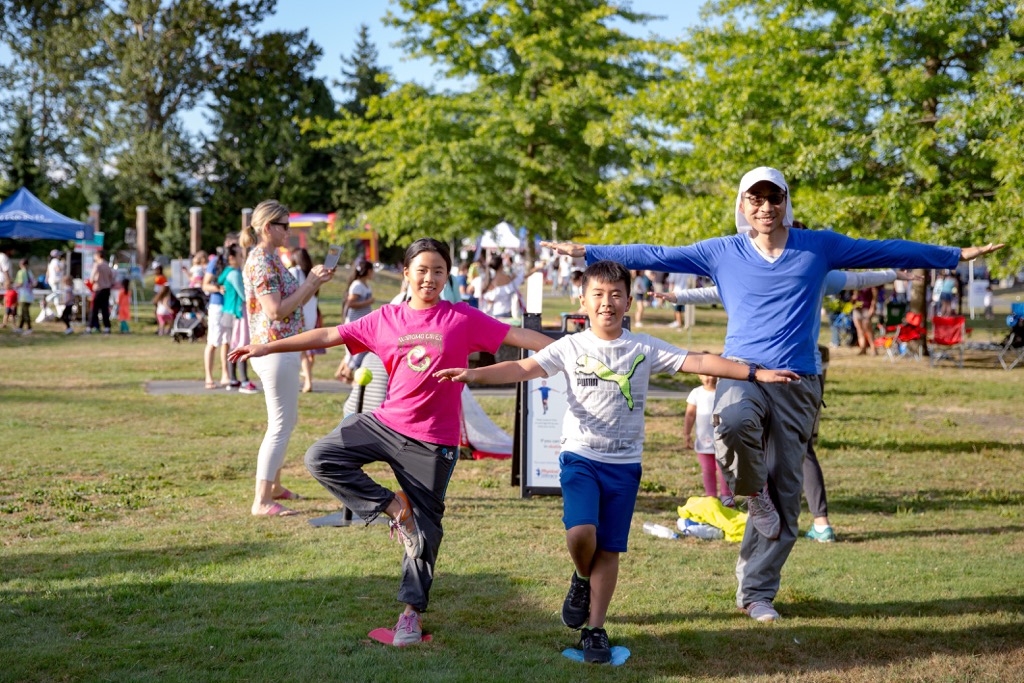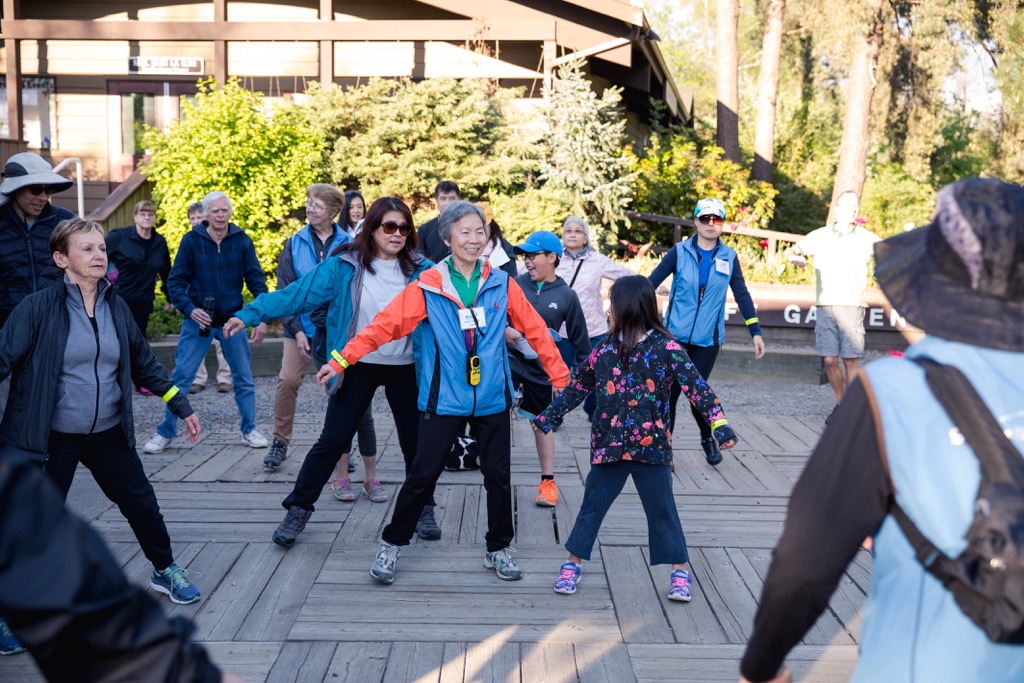
Richmond Olympic Oval provides a variety of opportunities to do different sports and activities. Photograph by Andy Grellman.
Residents and visitors in Richmond, Canada, continue to benefit from the city’s decision to host part of the Winter Olympics 2010. Sports managers told us how they ensure facilities and programmes reach the whole community.
How does a city with a population estimated at 223,000 manage to stage international and national sporting competitions every year, plus more than 100 community events? In recent years Richmond, in British Columbia, has hosted a long list of high profile contests such as the World Martial Arts Games, the World Wheelchair Rugby Championships, and the Fencing World Cup.
The city was the home of long track speed skating in the 2010 Olympic Winter Games and is proud of the fact that the venue, the Richmond Olympic Oval, now continues to serve the community daily. The Oval has over 6,000 members who use its fitness, wellness and sport facilities for activities including basketball, volleyball, ice hockey, speed skating, figure skating, group fitness, yoga, table tennis, and more.
In addition, the Oval has over 26,000 square feet (2,400 square metres) of strength training and workout space, a 44 feet (13 metre climbing wall), two indoor hockey rinks, and houses the Richmond Olympic Experience, North America’s only Olympic Museum. Thanks in part to the many opportunities offered at the Oval, Richmond attracted 8 million visitors last year – 600,000 more than in 2015.
 According to Serena Lusk, General Manager of Community Services, Richmond has always taken sport, health, wellness and physical activity seriously. Richmond City Council endorsed the Richmond Community of Excellence for Sport and Wellness Initiative in 2007, in the lead up to Richmond’s participation in the 2010 Olympic Winter Games. “We see hosting these events as a positive economic and social benefit for our community,” says Serena. “We are well-suited to host events with large numbers of participants, but we also recognise that spectator events are a great stimulus to participation.”
According to Serena Lusk, General Manager of Community Services, Richmond has always taken sport, health, wellness and physical activity seriously. Richmond City Council endorsed the Richmond Community of Excellence for Sport and Wellness Initiative in 2007, in the lead up to Richmond’s participation in the 2010 Olympic Winter Games. “We see hosting these events as a positive economic and social benefit for our community,” says Serena. “We are well-suited to host events with large numbers of participants, but we also recognise that spectator events are a great stimulus to participation.”
She explained that the partnership-based Community of Excellence initiative aims to position Richmond as the best place for residents to play and achieve their highest potential, while also being a model for a Sport For Life community in Canada and the world. “Richmond continues to work towards integrating the delivery of recreation, school physical education and athletics, community sport, and regional health, to enable all citizens to reach their full potential within the physical literacy, enhanced sport achievement and active for life framework.”
Richmond got involved with the Active Well-being Initiative (AWI) as a pilot city because it wanted to connect with other cities, and to share its experiences as a place that is making the most of its Olympic legacy. Serena describes a “culture of activity, sport and wellness” that is being served in the Oval and across the whole community.
“We have a lot of capacity in our community already,” she describes. “Part of the attraction was being part of an international network of cities and contributing the knowledge that we have gained coming out of our Olympic experience. Richmond has tremendous capacity in terms of facilities, programmes and services to support physical activity and sport. Participation in the Active Well-being Initiative offers unique opportunities to learn from other cities how they are getting their residents more active and to share what’s working in our community.”
There are already a number of physical activity, sport and health strategies in Richmond. Since joining the AWI, the city has reaffirmed its alliance with the local health authority and the school district through the development of an updated Community Wellness Strategy that identifies innovative and collaborative approaches, under five focus areas, to improve wellness outcomes for residents.

Richmond Metropolitan area.
In order to evaluate the impact of the strategy’s actions, the alliance is working to increase and deepen its research into health and physical activity levels. To this end, Vancouver Coastal Health, which delivers health services to the region, in partnership with Fraser Health and the eHealth Strategy Office at the University of British Columbia, is preparing to launch an updated version of the My Health My Community survey, which aims to provide a complex analysis of the behaviour and well-being of its adult population, broken down by factors such as age, gender, socio-economic status and race.
The last survey indicated that while Richmond residents tended not to participate in harmful behaviours such as binge drinking and smoking, there was work to be done to promote social connectedness and increase physical activity. Thirty-seven percent of survey participants reported doing 150 minutes or more of weekly physical activity, compared to 44% in the Metro Vancouver area. Serena believes that this last result could be a reflection of Richmond’s diverse ethnic mix. “More than seventy percent of our community identifies as a visible minority, with the majority of this group being of Chinese ethnicity,” she explains. “Sixty percent of Richmond residents were born somewhere other than Canada. We do think that the data may not account for this diversity. The next release of the survey will try to capture some possible cultural influences. For example, we have a huge contingent that practise Tai Chi. If you ask respondents, do you do vigorous activity for 30 minutes, five times a week, they might not say yes, but this type of physical activity is recognised as providing significant health benefits.”
Serena suggests that the reasons why most people in Richmond do not do enough exercise to benefit their health reflect a global rise in sedentary behaviour: “These are not particularly local issues. They are technological, with changing lifestyles, more of a focus on work, people needing to commute to work, and not having the time to be able to prioritise physical activity. In many areas in our region, housing is very expensive. That often means two parents working, and not having the resources to take children to activities or participate in physical activity themselves.”

Children taking part in Move For Health Week. Picture by www.jenniferstrangphotography.com
One project intended to increase awareness around the benefits of physical activity for residents of all ages is Move for Health Week. This has expanded from a single day focused around an organised walk with the Mayor, to a week of activities taking place at a variety of locations and featuring a Wee Walk event for pre-school children and their parents. Lisa Fedoruk, Richmond’s Global Active City programme coordinator, explains: “Throughout Move for Health Week, free or low-cost programmes and activities are offered in all neighbourhoods of the city to raise awareness of different opportunities that are available, to promote healthy active living all year long. It is not just about physical activity, but also mental health, overall wellness and making community connections.”
The City of Richmond offers various schemes aimed at getting children and young people more active, such as a $19 (€12.5) Swim and Skate Summer Pass that provides five to 16-year-olds unlimited access to municipal pools and rinks. In summer 2017, 2,583 passes were bought. There is also a Grade 5 Active! Pass for children aged 10 and 11 years. Serena explains: “We chose that age because that is when children tend to
drop off from doing physical activity. If we can make a difference in that year, we expect
that it makes a difference for the long term.”
A grant secured through TAFISA’s Take Back Your Streets programme provided another opportunity to enhance Richmond’s work to promote physical activity for children and youth. The city’s Physical Literacy Street Team attended 30 community events in 2017, with Street Team Leaders facilitating games for children and youth while educating the public on the importance of sport and being active. Over 2,500 children and close to 1,300 adults were engaged by Street Team Leaders at events. The programme also built organisational and community capacity, with 76 City of Richmond staff and 72 Street Team Leaders and volunteers trained to deliver physical literacy activities.

Community activities organised by the Physical Literacy team.
The results of the My Health My Community survey revealed that people not born in Canada were less likely to have close friends in whom they could confide. “We work very hard to provide our programmes and services in a way that will allow people to connect with each other and form relationships with each other,” adds Serena. One project that encourages community cohesion is Walk Richmond – where volunteers lead walks throughout the city free of charge. Each walk is attended by up to 50 people, learning about the city, being in nature, and making social connections.

People of all ages take part in Walk Richmond.
Walking and cycling are popular in Richmond, as well as sports such as badminton, table tennis, soccer (football), hockey and swimming. “We are very fortunate in our opportunities in terms of facilities, indoor spaces, outdoor spaces, parks, and trails,” describes Serena. “As a city, we are entirely flat – you can do a really fast run, even with a stroller.”
All public sports facilities are subsidised, with additional programmes providing lower rates for people with low incomes. There are nine community centres, one of which will be rebuilt over the next couple of years. The city is planning a new community centre in the rapidly-growing city centre neighbourhood, along with building a 110,000 square feet (10,200 square metres) multi-purpose facility that will house aquatic, fitness, seniors and field sport support services. At a cost of $80million (€52,800), this Minoru Centre for Active Living will be the second most expensive public facility in Richmond’s history, after the Oval. It is due to open in autumn.
There are 145 parks, with 150 acres of new parks under construction; more than 100 sport fields, 45 miles (73 kilometres) of trails, 37 miles (60 kilometres) of road cycling paths, a running track, two aquatic centres, two ice arenas in addition to the Oval, a curling centre and a pitch and putt golf facility. “We are a very fast-growing community,” says Serena, “So that has provided some interesting challenges, but also brought new opportunities to design our city in a way that encourages physical activity.”
Richmond is considering applying for certification as a Global Active City by the end of this year.



